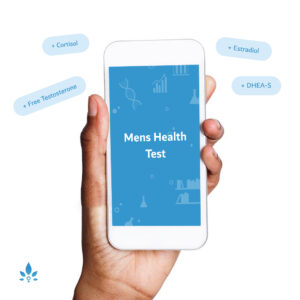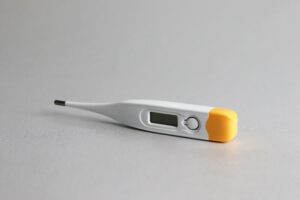Does Obesity Contribute to Male Infertility?


According to the World Health Organisation, over 650 million adults worldwide are obese. With prevalence rates increasing rapidly across developed countries, obesity is becoming a major public health concern. Across the Arab world, it is estimated that approximately 30% of the population are obese. Obesity predisposes males and females to many potential health issues, including infertility.
How is obesity measured?
A person’s Body Mass Index (BMI) is used to determine whether they are obese. BMI is a measure of body fat using height and weight measurements; weight in KG divided by height in metres squared (m2):
BMI = KG/m2
The general consensus is that adults with a BMI in the range of 25 – 29.9 KG/m2 are overweight, and those with a BMI of ⩾30.0 KG/m2 are obese.
Having a high BMI puts an individual at greater risk of various serious health issues, including type 2 diabetes, high blood pressure, high cholesterol and cancer. It also affects a person’s quality of life, often having a negative impact on their self-esteem and confidence.
In females, the effect of obesity on infertility has been well studied and it is widely known that a high BMI can result in menstrual cycle irregularities. The impact of obesity on a male’s ability to conceive has been less extensively studied. However, it is likely to have an effect as an increased BMI is associated with lower testosterone production, poor semen quality and reduced fertility.
How obesity affects male fertility:
Endocrine dysregulation
Typically, obese, infertile men have lower testosterone levels and higher circulating oestrogen. The reduction in androgens, primarily testosterone, is proportional to the degree of obesity. Increased peripheral aromatisation of androgens causes higher levels of oestrone and oestradiol. Obesity results in more white adipose tissue, which also increases oestrogen levels. Alterations in the testosterone/oestrogen ratio have a negative effect on the hypothalamic-pituitary-gonadal (HPG) axis, disrupting the negative feedback loop and resulting in diminished sperm counts.
Other hormones are also implicated; men with a high BMI have lower levels of Sex Hormone Binding Globulin (SHBG). SHBG is involved in spermatogenesis and Sertoli cell function. Obese, infertile men often have elevated leptin and, interestingly, levels are less high in obese men who are not infertile. Leptin is secreted by white adipose tissue into the bloodstream. Therefore, the serum levels of this hormone correlate with the body’s fat stores. High leptin inhibits the production of testosterone from the leydig cells.
Insulin resistance
Obese men with type 2 diabetes often have secondary hypogonadism due to their insulin resistance. It is thought that insulin resistance triggers disruption of the HPG axis, although the mechanisms are not fully understood. Insulin resistance also results in reduced testosterone levels. Obesity is a major risk factor for development of type 2 diabetes, with difficulties in conceiving being just one of the associated health risks.
Oxidative stress
Obesity results in an increase in the production of reactive oxygen species (ROS), which cause damage to the DNA located within sperm cells. Men with a higher BMI exhibit increased oxidative stress and, as a result, more ROS.
Metabolic syndrome
Metabolic syndrome (MetS) is triggered, in part by obesity. Other contributory factors include high blood pressure, high plasma glucose and high cholesterol. MetS increases the risk of type 2 diabetes, and is also linked to the development of hypogonadism and erectile dysfunction. Not all men who experience erectile dysfunction are infertile, but difficulties in sustaining an erection are more common in men who are struggling to conceive. One study found that 27% of infertile men experienced erectile dysfunction. Furthermore, those who report erectile difficulties are significantly more likely to be overweight or obese. Obese men with MetS frequently present with hyperinsulinaemia and hyperglycaemia, which can have a detrimental effect on sperm quantity and quality.
Hyperthermia
The process of spermatogenesis is highly heat sensitive, with the optimal temperature being 34-35°C. Increased adipose tissue in the scrotal area can have a detrimental effect on gonadal temperature and damage the developing sperm cells. The consequences of this include reduced sperm motility and increased DNA fragmentation, both of which hinder a man’s ability to conceive.
Environmental and psychological factors
There are many environmental pollutants and endocrine disruptors that have been shown to affect male fertility. A lot of toxins are fat soluble and therefore, tend to accumulate in fatty tissue. This suggests that obese men, who have more fat reserves, are at greater risk of suffering the harmful effects caused by a build up of these toxins.
Obese men are also more prone to sleep apnea. This is a disorder characterised by pauses in breathing during periods of sleep and one of the consequences is disrupted testosterone production. Levels of testosterone are particularly low immediately after waking. The condition can also reduce a man’s interest in partaking in sexual activity.
It is important not to under-estimate the psychological burden of obesity. Obese individuals are more likely to consider themselves unattractive and undesirable than their non-obese counterparts. They may be emotionally unwilling, or physically unable to engage in regular intercourse. They might experience a lack of desire and implement avoidance strategies, particularly if they find the process uncomfortable or are ashamed of their body. There is limited data suggesting that obese men have intercourse less frequently; however, whether this is due to psychological factors, or a physical barrier, such as erectile dysfunction, is not clear. Further work is needed in order to validate and better understand these findings.
To conclude, obesity does appear to contribute to male infertility; probably due to multiple factors interacting and exacerbating the negative effects of lower testosterone levels and poorer semen quality in males with a high BMI.
Consider Nabta’s Men’s health test and get to learn more.
Nabta is reshaping women’s healthcare. We support women with their personal health journeys, from everyday wellbeing to the uniquely female experiences of fertility, pregnancy, and menopause.
Get in touch if you have any questions about this article or any aspect of women’s health. We’re here for you.
Sources:
- Hammoud, Ahmad O., et al. “Impact of Male Obesity on Infertility: a Critical Review of the Current Literature.” Fertility and Sterility, vol. 90, no. 4, Oct. 2008, pp. 897–904., doi:10.1016/j.fertnstert.2008.08.026.
- Hofny, Eman R.m., et al. “Semen Parameters and Hormonal Profile in Obese Fertile and Infertile Males.” Fertility and Sterility, vol. 94, no. 2, July 2010, pp. 581–584., doi:10.1016/j.fertnstert.2009.03.085.
- Katib, Atif. “Mechanisms Linking Obesity with Male Infertility.” Central European Journal of Urology, vol. 68, no. 1, 13 Mar. 2015, pp. 79–85., doi:10.5173/ceju.2015.01.435.
- “Obesity and Overweight.” World Health Organization, https://www.who.int/en/news-room/fact-sheets/detail/obesity-and-overweight.
- “Managing Overweight and Obesity in Adults: Systematic Evidence Review from the Obesity Expert Panel.” National Heart Lung and Blood Institute, U.S. Department of Health and Human Services, https://www.nhlbi.nih.gov/health-topics/managing-overweight-obesity-in-adults.
- Morrison, Christopher D., and Robert E. Brannigan. “Metabolic Syndrome and Infertility in Men.” Best Practice & Research Clinical Obstetrics & Gynaecology, vol. 29, no. 4, May 2015, pp. 507–515., doi:10.1016/j.bpobgyn.2014.10.006.
- Salam, Mohamed Ahmed Abd El. “Obesity, An Enemy of Male Fertility: A Mini Review.” Oman Medical Journal, vol. 33, no. 1, Jan. 2018, pp. 3–6., doi:10.5001/omj.2018.02.












































